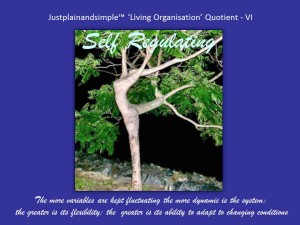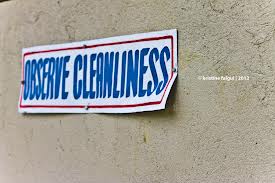
3,590 total views, no views today
No Tall Claims. No Big Promises. No Lofty Vision.
Justplainandsimple ….. Serving to Help Realise
Business, Professional and Personal Potential …..


3,590 total views, no views today
 Let’s ask any entrepreneur the question : Why does your business exist ??
Let’s ask any entrepreneur the question : Why does your business exist ??
Their answers will get bucketed in only two Justplainandsimple™ reasons and in this order :
1)Creating Value for the customer
2)Creating ROI for the Owner
Only if the customers see value, will more of them buy your products and services (n); more frequently (f) and pay you more (p). The cumulative product of these is Revenue (R) i.e. n X f X p. So, value creation is a necessary condition !!
If the entrepreneur does not make a return on his/her resources (after and inspite of and because of providing Value to the customer), there is no reason for them to be in business. Simply put, there could be other uses they can put their resources to, with better risk weighted returns.
However, one could argue, that there is another case/option of Creating Value without looking for returns. A ‘charity/donation’ framework !? This has different implications, which may not be sustainable too. A lot of ‘not for profit’ organisations get caught in this trap. Let’s use this as an example at one end of the spectrum to demonstrate a point.
The logic works like this. It is a ‘not for profit’ organisation, so profit is not an objective to be sought.
Hence, starting at the top of the P&L, fine tuning and polishing the Value Offering to yield optimal R = n X f X p loses significance. This leads to suboptimal product/service offerings coming from this sector. No wonder so many ‘charity’ organisations have gathered a connotation of sub standard offerings.
Next casualty in line is productivity. Since it is ‘not for profit’, squeezing every expense line for productivity is not key. This takes a very critical role in a ‘for profit’ organization.
Hence what flows down at the base of the P&L, is ‘NO PROFIT’ ….. a self fulfilling prophecy !! From where do resources come for funding the loss or resources for growing the scale or further expansion of scope ?? More donation !! Sustainability is affected.
What is needed to flow out, even in such an example of a ‘not for profit’, is a SURPLUS at the base of the P&L after revenues and expenses have been churned. Whatever purpose that surplus maybe put to. Not for returns to owners, but for building scale, for reaching more beneficiaries, for further investments ….. !?
So whether we call it ‘profit’ or ‘surplus’ the significance is clear. QED.
Reasonable surplus or how much is enough, is a matter for another debate related to human greed and we keep it out of the scope of this discussion for the time being. Needless to say, Profit or surplus is a necessary but not sufficient condition. Therefore we have new concepts of triple bottom line coming up : profit, people and planet.
If profit is a requirement that has to be met, we get answers in the way we define it. Right in the beginning of this article, I indicated the second reason for the existence of businesses to be ‘creating ROI for the owner’.
The entrepreneur is looking for ROI. So relative ROIs from different opportunities are compared and investments made. Defining profit this way, helps us in understanding and resolving this issue creatively.
Profit cannot be made mathematically by increasing prices and cutting expenses. Pricing the product to the market is the key. More customers (n) are not going to pay more (p) or buy more frequently (f) than the value they attach to the offering.
Also, you cannot cost cut your way to glory. There will be expenses, there will be costs. Understanding ‘what adds most value to the customer’, to empathise, allows the business to focus and allocate expenses in areas that are important for value creation and hence to reap benefits of leverage and productivity ….. this is rewarded by the right customers (n) buying at the right frequency (f) at the right price (p) !!
Fundamentally, business is ‘philosophy’, not mathematics.
The answer to ‘Profits in low income markets’ therefore lies in creativity and innovation. To find ways of increasing productivity, efficiency and effectiveness.
Nature teaches us various ways in which a dynamic balance is maintained in ecosystems. An organism (organization) picks up signals from its environment (market reading) and makes structural changes within to respond intelligently and in turn influences the environment. This enables it to learn, co-exist and evolve continuously. The story of evolution is a story of collaboration of species and co-existing/co-evolving symbiotically.
Who influences whom then ? The environment and organism keep the whole ecosystem in a harmonious dynamic balance, playing a continuous dance !! So also should organisations and low income markets ….. a continuous dance of celebrating harmony in an interdependent partnership ….. with flexibility and respecting and honouring integrity and diversity in action !!
This was first published in the Ennovent Blog: Innovations for Sustainability
3,672 total views, no views today
 There is so much buzz surrounding healthcare today. And rightly so. Healthcare is on a growth path.
There is so much buzz surrounding healthcare today. And rightly so. Healthcare is on a growth path.
All eyes are focused on the healthcare success stories. For gaining valuable learnings and for valuation gains !!
Lost somewhere in the melee are stories of slips that can give equally significant insights.
Without disclosing the identity, here is one such case …..
A new unit, started slow and steady with one healthcare speciality and progressed well. Led by an enthusiastic entrepreneur, full of passion and ambition, ready to take risks. All the correct ingredients it seems.
The enthusiasm led to related diversification into other healthcare verticals.
Two years into this mode, growth started slowing down and profits started getting eroded.
Good brand equity, doctors, patient satisfaction, advertising spends, infrastructure ….. nothing seemed to be wrong.
Root cause analysis brought up a peculiar core issue, generally very difficult to accept by any business leader ….. that the leader lacked the ability to handle multiple business operations.
Adaptive Thinking, Empowerment with Accountability, Execution Excellence, Networking and Executive Maturity were the development areas that the leader could have sought help in and built on, to Realise Business, Professional and Personal Potential.
More cases …..
3,627 total views, no views today

“Cleanliness and order are not matters of instinct; they are matters of education, and like most great things, you must cultivate a taste for them.”
―Benjamin Disraeli
In the context of Strategy and its correlation with the Value of Cleanliness, focus is on clarity of mind. Physical cleanliness and hygiene, however, continue to be important always ….. premises, building design/layout, infrastructure, ….. and do play a strong role in cleanliness and health of mind and body.
Specifically related to Strategy, is the role of Cleanliness in terms of cutting out noise and clutter of thought …..right from the definition of the Strategic issue to execution of actions with neatly and clearly defined scope, roles, timelines.
Jim Collins, in his well known Hedgehog Principle, in a way refers to a ‘squeaky clean’ and crystal clear mental state while defining areas of passion, expertise and economic engine drivers. Such clarity is actually the outcome of a well defined, neat and clean thought process and allows selection of highly effective Strategic options !!
An organization that continues to ‘clean’ and polish its shared understanding of Values, Strategic Priorities, Vision, Culture, Decision Processes, Reward and Review Mechanisms, stays Attractive and Healthy !!
6,664 total views, no views today

Strategy makes the difference between a successful company & a failure ? The word has its origins in Greek :
‘Strategia’ = “generalship”
‘Stratos’ = “army”
‘agein’ = “to lead”.
In military science, strategy refers to the large scale plan for how the generals intend to fight & win a war. Strategy is about making choices to have A Winning Proposition to not only preserve resources, but leverage & multiply ….. in the Creation of Value ….. (in the same order as below) :
A Unique ‘Causal’ relationship exists between ‘Strategy’ and ‘Confidence’. The approach to Strategy has to be with full confidence ….. in one’s intentionality, in capability, in execution, in insights, in people…..
….. And deep insights, robust strategy, capable team ….. in turn lead to Confidence !!
Confidence is contagious & so is lack of confidence & a customer (as well as your enemy) will recognize both.

General Patton, having studied in detail and read his opponent Rommel’s book, exclaims after scoring over Rommel in battle “Rommel, you b******, I read your book !!”
A quote from General Patton captures the ‘Strategy – Confidence’ correlation beautifully : “A man must know his destiny. If he does not recognize it, then he is lost. By this I mean, once, twice, or at the very most, three times, fate will reach out and tap a man on the shoulder. If he has the imagination, he will turn around and fate will point out to him what fork in the road he should take, If he has the guts, he will take it.”
_________________________________________________
Working Together with You to Facilitate Realisation
of Your Business, Professional and Personal Potential
_________________________________________________
4,315 total views, no views today